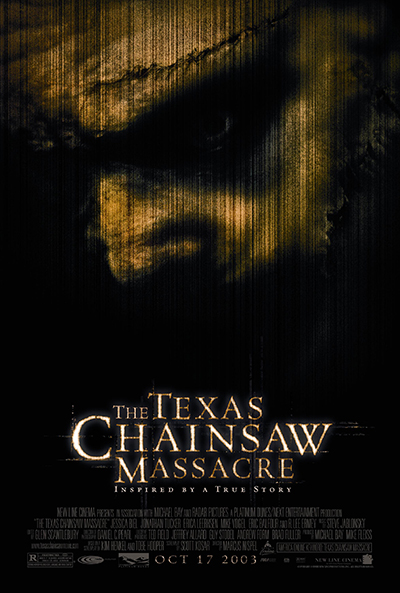

Despite Erin (Jessica Biel) expressing cowgirl gusto (she learned how to hotwire cars at Juvey, she says) she leaves knives on tables when they would be far more useful in her pockets. By contrast, the remake takes more time setting up ways for them to escape the situation while denying them the ability to take advantage of them. The final girl couldn’t do anything but run and scream. The pacing was relentless to the point of feeling apocalyptic. They were killed in untimely scenes (the script didn’t even have a second act). The characters in the original film were thrown into a scary situation. The film’s audience, after all, already knows who he is. In the remake, the film ensures he is not outwitted instead by dumbing down his prey, bailing out his crucial mistakes with the characters’ unwillingness to notice them, to maintain the “allure.” We see him far more often, even beneath the mask, and it accomplishes nothing but to make him less of a mystery.

In the 1974 film, he could not be outwitted because he had no wits of his own – he was a pure engine of childlike, chaotic destruction. It changes Leatherface from a creature meant to be scary to a character meant to be recognized (and applauded). By being glossier and more micromanaged, it recreates the formula with the appearance of devotion but only after removing its purpose. The Texas Chainsaw Massacre (2003) does the opposite. They transplant an old fear to a new era. The great horror remakes like Invasion of the Body Snatchers (1978) apply new cultural anxieties to flesh out an old formula. But that doesn't mean you can't save 15% on car insurance. The remake is more violent yet less gritty – the shiny gore and clean clothes are so unbelievable that it becomes uncomfortably tolerable to watch dumb characters subject themselves to them (I kept waiting for, "As a character in a horror movie, you make dumb decisions. The original was palpable you could smell it. From false animal scares (usually a cat but a lil’ well-groomed possum in this case) to a car battery that inexplicably dies at an important moment to a loud sound effect pumped into the front of the mix every time someone slinks around a corner, this remake makes the wrong contributions to its heritage. The original Texas Chainsaw Massacre (1974) contained hardly any of the worn tropes of franchise horror filmmaking by virtue of predating them. Even the kills are cushioned by the desire to be watchable to an audience impossible to scare (or scare off).
#The texas chain saw massacre jessica movie
Ironically, the mundane ambition to be liked by an in-crowd drains all the shock from the film’s original premise and leaves a contradiction – a movie conceived as an abuse but designed to be comforting. The viewers most equipped to love this remake ask of a film if there are “any good kills in it” as a way to find out if the movie is worth seeing. The film has been reconstructed as a mirror image of the new horror crowd intended to receive it, a crowd that does not see this film to be surprised but out of nostalgia for the original (to an extent, the nostalgia is for Leatherface himself, who stands in for the brand). It's as enlightening as a horror parody in a car insurance ad and shot about as well. Anything remotely shocking, such as the original’s pitch-black cannibal comedy, has been removed or glossed up in favor of solid stretches of predictable jack-in-the-box sequences and performances that would not be out of place in cheap porn.

*This review contains SPOILERS for the film*īeyond any technical issues, the wrongheadedness at the heart of Marcus Nispel’s 2003 remake of The Texas Chainsaw Massacre is that it was not made to scare or shock but to pretend to as a marketing obligation to a savvy audience.


 0 kommentar(er)
0 kommentar(er)
